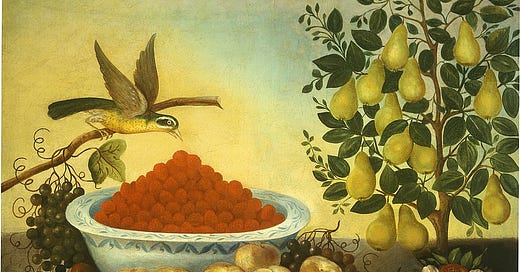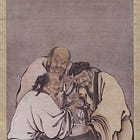This is the last post in the series of articles on the story of Thomas and Olga de Hartmann's time with Gurdjieff and his other followers between 1916-18. The series looks especially at the significance and contrast between sweet and bitter things, literally and allegorically, and about the role of "magnetism."
As always, familiarity with fundamental Fourth Way texts is assumed. Please see Introduction and Bibliography for guidance, and for full citations of abbreviated references.
Continuing from:
After the events in the last post, Thomas and Olga, searching for a place of their own in Essentuki, at last found a tiny house, situated behind the owner's property. Beyond it were empty stables, and further back,
. . . an unfinished, typically Caucasian, two-storey house, with all the rooms giving on to a veranda — although as yet this house had no windows or doors. It was as if it had been waiting for us. And not only for us, because after Mr Gurdjieff came to Essentuki in January 1918, he founded his Institute there in the unfinished house.1
Each of us, when we come to this teaching, is like an unfinished house, without windows or doors. And Gurdjieff’s Institute for the Harmonious Development of Man (now represented by group work and working with his writings), which begins in this unfinished house of ours, helps us first to clean it (destroying wrong associations),2 then to finish the building work, with perhaps the first step after cleaning being to put in windows and doors – letting the light in. It also seems to need another storey, recalling the illustration of the “three-story factory” that Gurdjieff uses to describe the human organism, for instance, in In Search of the Miraculous,3 or the “three-storey house,” as it is sometimes called, for example, by Nicoll.4





